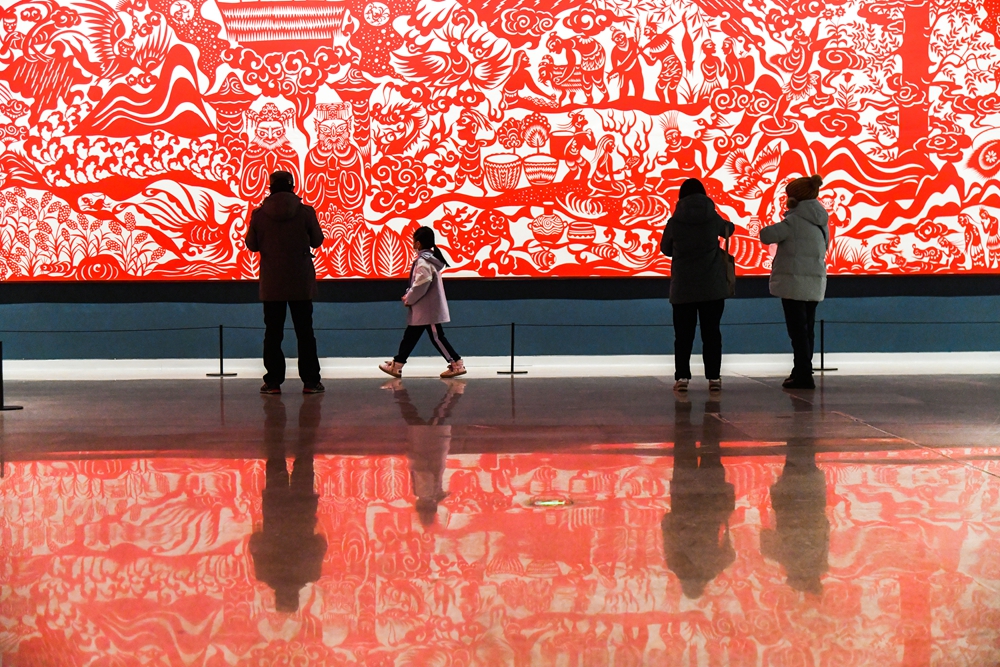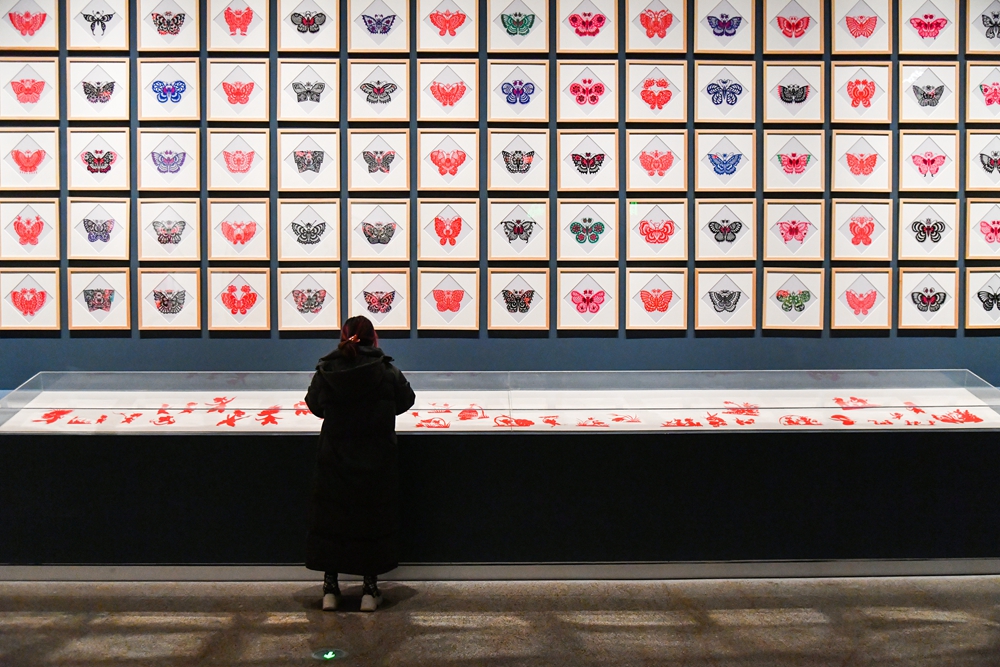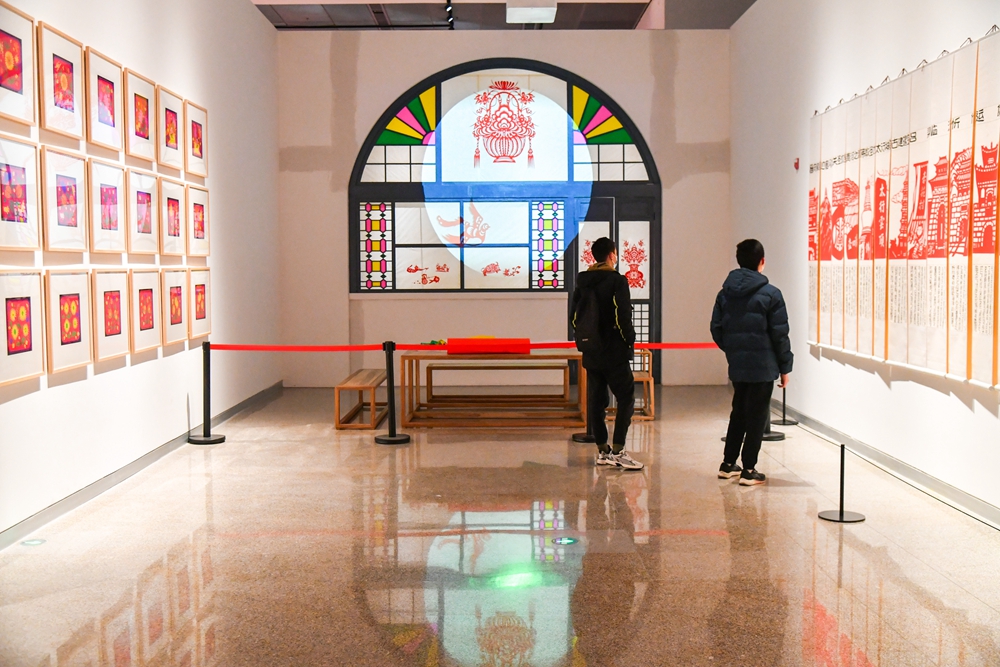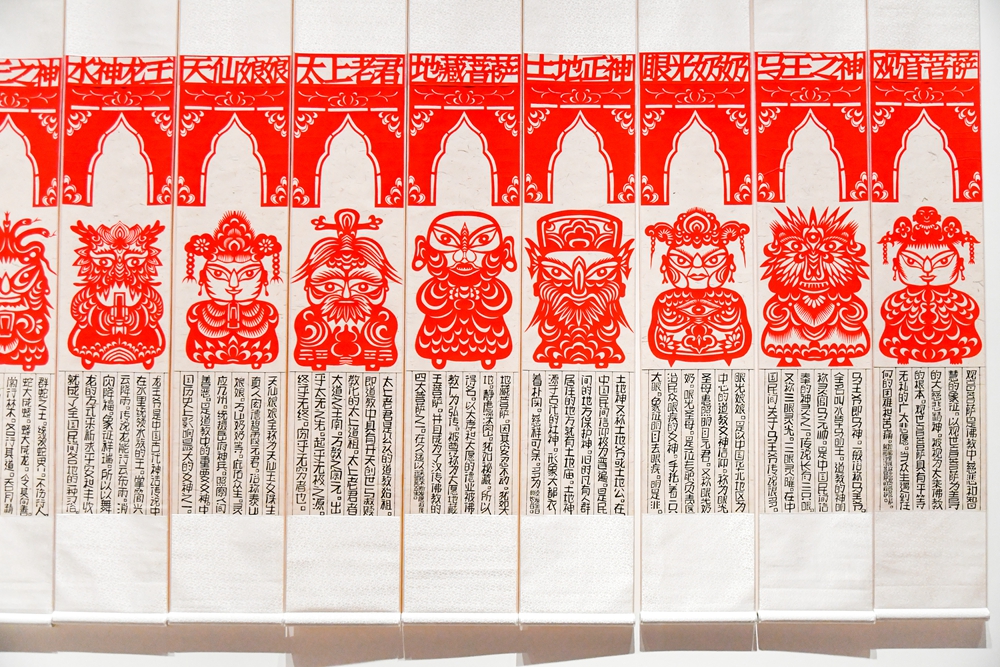| |





/
|
|
|
The China National Arts and Crafts Museum (China Intangible Cultural Heritage Museum) in Beijing has regained its popularity since reopening to the public on January 1, simultaneously displaying three exhibitions—all free of charge. Among these three, an exhibition of the paper cutting works of a seasoned artist from Shanxi Province in north China has proved particularly popular with Beijingers and visitors to the capital alike. Named after Shanxi's famous Taihang Mountains, the ongoing Soul of Taihang exhibit displays the meticulous paper cuttings created by artist Zhang Yongzhong. The style and motifs of this age-old Chinese art vary from region to region, reflecting distinctive local histories and folk cultures. The more than 400 works on display at the museum showcase the simpler paper cutting style found in China's northern region, especially in Shanxi. According to art historians, the art dates back to the second century, when paper was invented by Cai Lun, a court official of the Eastern Han Dynasty (25-220). But long before said invention, the Chinese already used similar skills to make cut-outs on leaves, leather, silk and gold foil. Beginning in the Tang Dynasty (618-907), paper cutting began entering mainstream culture as a decorative art form during Chinese holidays. The art was listed on UNESCO's Representative List of the Intangible Cultural Heritage of Humanity in 2009. (Text and photos by Wei Yao) Copyedited by Elsbeth van Paridon Comments to weiyao@cicgamericas.com |
|
||||||||||||||||||||||||||||
|